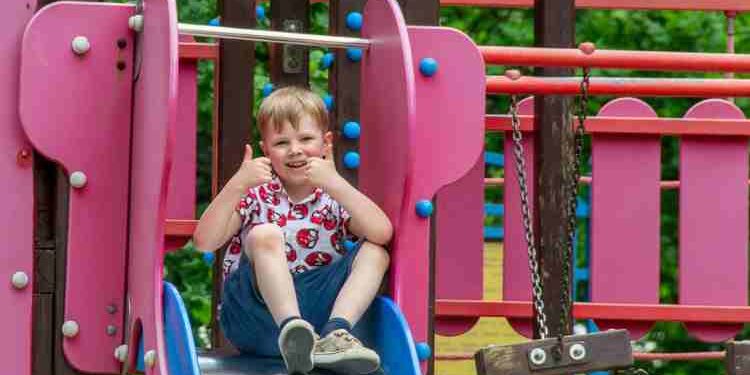Building resilience in young children is an essential facet of early childhood development. It is a robust foundation that sets the stage for coping with future challenges and emotional well-being. Particularly in the pre-preschool age group, children begin to exhibit their first reactions to stress and adversity.
Parents play an indispensable role in this early stage, guiding and nurturing resilience in their children. Understanding resilience, its importance, and ways to foster it during these tender years is pivotal. By focusing on pre-preschool strategies, parents can ensure their children have the mental fortitude needed to navigate life’s complexities.
Understanding Resilience In Children
Resilience is more than just a buzzword; it’s a key developmental factor that can shape a child’s future. This ability to bounce back from setbacks and adapt to change lays the groundwork for social and emotional growth. Resilience teaches children how to handle difficulties with grace and builds their confidence.
As they prepare for preschool, understanding resilience becomes even more vital. Developing resilience helps them navigate relationships with peers, handle new experiences, and adapt to the structured environment of a school setting. It’s a crucial step to prepare your child for preschool and set them on a path to success in life.
Strategies To Enhance Resilience
Enhancing resilience in children requires intentional effort and strategies. These approaches aim to foster a robust mental framework, emotional intelligence, and interpersonal skills. Here’s a comprehensive look:
1.Develop A Growth Mindset In Children
Instilling a growth mindset emphasizes the idea that abilities can be developed through dedication and hard work. Consider a scenario where a child struggles to tie their shoes. Rather than giving up or relying on Velcro straps, the child is encouraged to keep trying, learn from each mistake, and understand that mastery comes with practice.
This perspective encourages children to embrace challenges and learn from failures, building resilience and a love for learning. By focusing on effort and persistence, the child eventually succeeds in tying their shoes, reinforcing the growth mindset and the belief in their abilities.
2.Teach Emotional Regulation Skills
Emotional regulation helps children understand, manage, and respond to their emotions effectively. For example, a child feeling frustration over losing a game may initially react with tears or anger. By teaching emotional regulation skills, the child can be guided to recognize the emotion, understand that it’s natural to feel upset, and then use calming techniques such as deep breaths to manage the reaction.
Over time, these skills enable the child to recognize feelings, articulate them, and deal with them constructively, turning a potential tantrum into a moment of learning and self-control. This process is integral to building resilience.
3.Promote Positive Relationships
Positive relationships with parents, siblings, and peers play a critical role in a child’s ability to cope with stress. Imagine a child who is shy and finds it difficult to make friends in a playgroup. Through gentle encouragement from parents and engaging in cooperative play activities with siblings, the child gradually learns to interact and communicate.
This nurturing environment promotes positive relationships, which are essential in building resilience, as they help the child feel supported and confident in social situations.
4.Encourage Problem-Solving Abilities
Teaching problem-solving skills empowers children to approach challenges with a can-do attitude. For example, when a child wants to build a tower with blocks but keeps knocking it down accidentally, frustration might set in.
Encouragement and guidance to analyze what went wrong and try different approaches can turn the situation around. By finding a more stable base or using blocks in a different configuration, the child learns to experiment and eventually builds a successful tower. This experience not only aids in building resilience but also enhances cognitive development, teaching the child that problems can be solved through creativity and persistence.
These strategies provide a multifaceted approach to resilience building. They create a supportive framework for children, preparing them for future challenges and helping them grow into well-adjusted individuals.
Pre-Preschool Activities And Tools
A thoughtful blend of activities, tools, and routines can foster this essential quality.
- Introduce Activities Tailored For Young Children: Engage them in playful learning experiences like simple puzzles, imaginative play, and outdoor exploration. These activities encourage curiosity, persistence, and introduce problem-solving in a fun way.
- Recommend Tools That Can Be Used At Home: Storybooks with resilient characters, arts and crafts supplies, or even everyday household items can be used creatively to enhance resilience. These tools help foster creativity, expression, and the ability to overcome challenges.
- Practice Daily Routines That Build Resilience: Consistent bedtime, mealtime, or playtime schedules provide stability and teach discipline and adaptability. Introducing small challenges within these routines encourages growth and adaptability, further enhancing resilience.
Through a combination of these strategies, parents can instill resilience in pre-preschool children. This sets the stage for a successful transition into more formal educational settings and a lifetime of confident learning.
Conclusion
Building resilience in pre-preschool children is a vital and achievable goal that requires thoughtful engagement from parents. By embracing these strategies and activities, parents can foster a resilient mindset, preparing their children for success in school and beyond.
